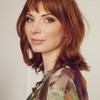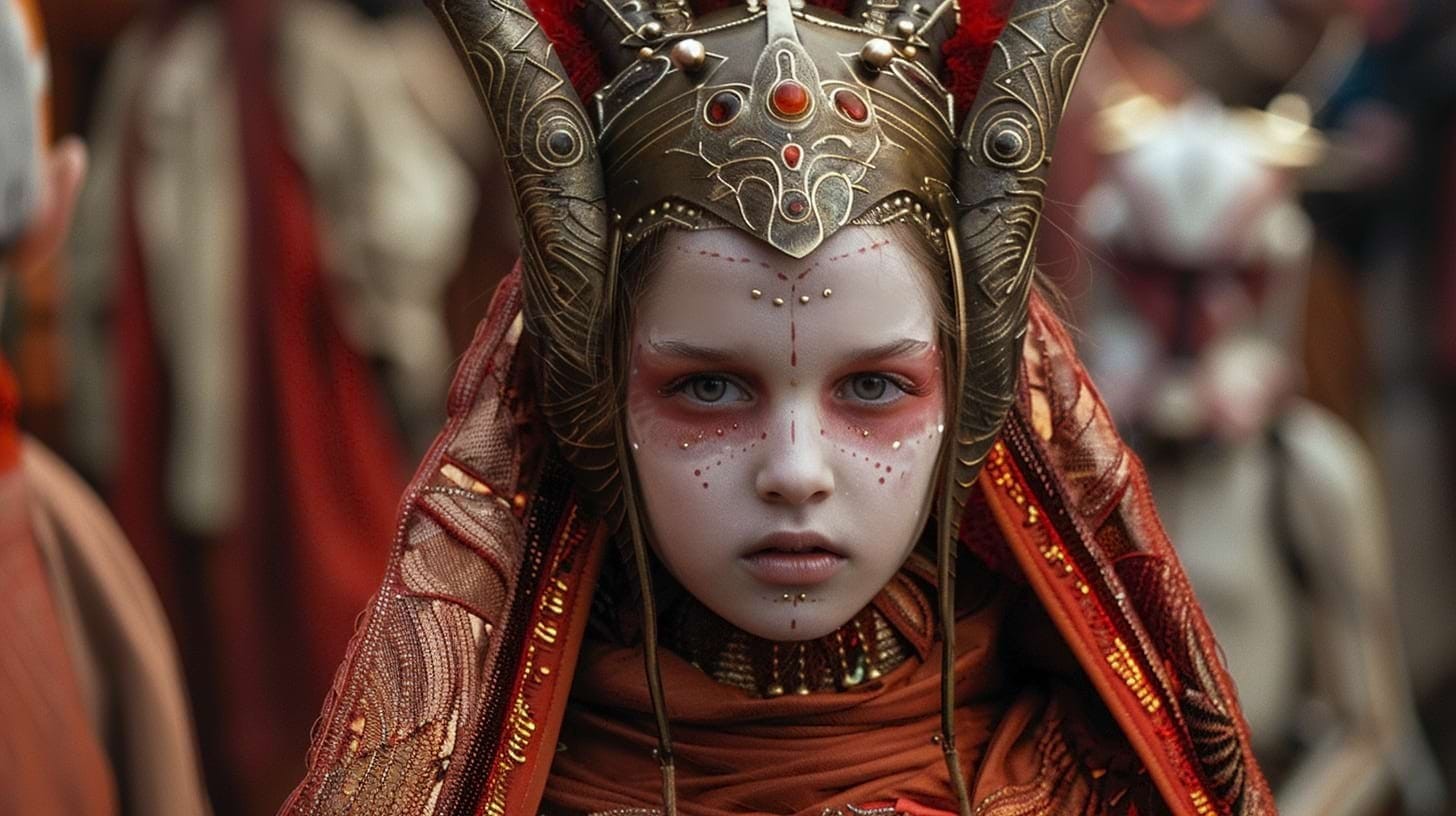The Art of Costume Design in Cinema: The Craft's Impact on Filmmaking
From the flowing drapes of ancient Greece to the sleek lines of futuristic spacesuits, costume design has served as a powerful storytelling tool. This article delves into the magic of costume design, exploring its influence on filmmaking and the artistry that brings visions to life


Every element contributes to the overall tapestry of a film, weaving together. Among these essential components, costume design is a vital thread, interwoven into the fabric of storytelling.
Costume design, and meticulously curated film wardrobes have emerged as potent conduits for character embodiment and narrative immersion.
Costume design goes beyond clothing; it combines deep research, unbridled creativity, and technical mastery. Every stitch and fabric selection is deliberate, imbued with purpose and meaning. Through their artistry, costume designers become storytellers in their own right, breathing life into characters and shaping their very personas on screen.
Costume Effects on Narrative and Character 🎭
Costumes become a visual language, providing rich information about a character. Each garment silently speaks volumes, offering clues to the character's background, social standing, personality, and even their emotional state at any given moment.
Streamline your costume design process!
Filmustage automates script breakdowns, scheduling, and collaboration — so you can focus on creativity.
Visual Storytelling Through Wardrobe
A costume's color, texture, and style can instantly establish the mood and tone of a scene. For example, the stark white attire in Stanley Kubrick's "A Clockwork Orange" (1971) evokes a sense of sterility and societal control, while the vibrant colors in Baz Luhrmann's "Romeo + Juliet" (1996) reflect the passionate energy of the young protagonists.
Character Development
Costumes can be powerful tools for showcasing a character's evolution throughout a film. In "The Dark Knight" (2008), Heath Ledger's Joker's iconic purple suit and smeared makeup become instantly recognizable symbols of his descent into chaos.
Costume design transcends into a narrative sculptor. Through historical research, designers unearth the essence of a period. This knowledge, combined with their creative vision and technical expertise, allows them to craft symbolic garments.
The Art and Craft of Costume Design 🧵
Costume artistry distills the essence of the story into ornate regalia, draping characters in symbological vestments that unveil the archetypal truths. Let's delve into the fascinating world behind the seams, exploring the techniques, materials, and creative processes that bring costumes to life.
Fabric Selection
Choosing the right fabrics is crucial for authenticity and visual impact. The flowing silks in Sofia Coppola's "Marie Antoinette" (2006) convey the opulence of the French court, while the worn leather armor in Peter Jackson's "The Lord of the Rings" trilogy (2001-2003) reflects the harsh realities of Middle-earth.
Techniques in Costume Design
Costume designers employ various techniques like dyeing, embroidery, embellishments, distressing, and aging garments to achieve the desired look and convey the appropriate period or character backstory. The intricate beadwork on Queen Amidala's costumes in the "Star Wars" (1999-2005) required hundreds of hours of meticulous handwork.
From Sketch to Screen: The Creative Process
The journey of a costume begins with a spark of inspiration. Costume designers collaborate closely with directors, writers, and actors to understand the character's essence, motivations, and place within the story. This translates into initial sketches, where color palettes, silhouettes, and potential fabrics are explored. Mood boards overflowing with visual references come into play, further solidifying the vision. Once a design is finalized, the magic of creation begins. Patterns are drafted, fabrics are selected, and skilled tailors and artisans bring the costume to life. The process is iterative, with fittings and adjustments ensuring the costume looks stunning and allows the actor to move freely and embody the character authentically.
🗓️ The pre-production process for costume design can span months or even years, involving extensive research, concept development, and the creation of mood boards and sketches before a single stitch is sewn.
Challenges and Triumphs in Costume Design 🏆
The artistry of costume design isn't without its hurdles. Beyond the initial allure lies the challenge of striking a harmonious balance.
Historical Accuracy
Bringing history to life on screen demands meticulous research. For instance, in the 2015 film "The Danish Girl", costume designer Paco Delgado faced a unique challenge. He needed to create a wardrobe that reflected the authentic style of the 1920s, while also seamlessly transitioning to accommodate the lead actor's portrayal of a character undergoing a gender transformation.
Stepping back in time, Colleen Atwood's costumes for "Memoirs of a Geisha" (2005) redefined the portrayal of geishas onscreen. She researched the complexities of kimono dressing, utilizing luxurious fabrics and subtle color palettes to showcase the characters' social standing and inner lives. The intricate layering and symbolism within each costume went beyond mere decoration, becoming a vital part of the storytelling. This triumph highlights the transformative power of period costume design.
Budget restrictions
Big-budget productions like "The Great Gatsby" (2013) boast lavish costumes, reflecting the opulence of the era. Conversely, smaller films demand resourcefulness from designers. Here, creativity takes center stage, with designers utilizing their ingenuity to craft stunning garments despite budgetary constraints.
Environmental factors
Environmental factors such as extreme temperatures or filming locations can also present unique challenges for costume designers, who must ensure the wardrobe remains visually stunning while bringing actors safety and comfort.
Overcoming these hurdles, costume designers achieve triumphs that leave a lasting impact. Their artistry work leaves an indelible mark on the silver screen, influencing not just the narrative but also the world of fashion and art. Countless costume designers have become legends, their creations inspiring generations of artists.
👗 Certain costumes transcend the films they inhabit, becoming cultural touchstones instantly recognizable across generations. From Dorothy's ruby slippers and gingham dress in "The Wizard of Oz" to Audrey Hepburn's quintessentially chic little black dress in "Breakfast at Tiffany's", these sartorial choices have woven themselves into the fabric of popular culture, forever etched in our collective memory.
How Filmustage Can Help Your Costume Design Process 🤝
Through attention to detail, historical accuracy, and artistic vision, costume designers craft visual biographies. These sartorial choices shape our understanding of the characters' evolution, the film's world, and the overall narrative. Every year the role of costume design will only become more crucial, ensuring the audience is visually transported into the heart of the story.
In today's fast-paced film production environment, tools like Filmustage can be invaluable assets for costume designers.
Script Breakdown
By automatically breaking down the script into elements like characters, scenes, and costumes Filmustage streamlines the initial research and planning stages.
Shooting Schedule
Filmustage also helps costume designers create a flexible shooting schedule so that multiple scenes with the same costumes can be filmed on the same day.
Collaboration
The Team Access feature allows costume designers to collaborate seamlessly with other departments like directors and production assistants.
By utilizing Filmustage, costume designers can optimize their workflow and contribute even more effectively to the magic of filmmaking.
From Breakdown to Budget in Clicks
Save time, cut costs, and let Filmustage’s AI handle the heavy lifting — all in a single day.